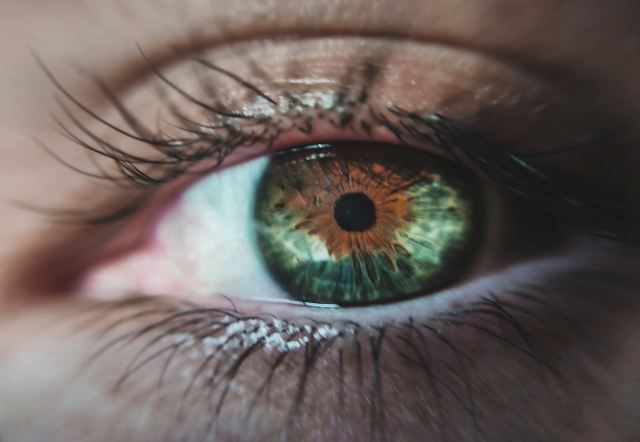The Importance of Early Detection and Diagnosis of Glaucoma

Glaucoma is an eye condition that affects vision. It can lead to blindness if left untreated or do not get timely treatment. It is where the optic nerve becomes damaged due to elevated intraocular pressure. Unfortunately, any vision loss or blindness caused by glaucoma cannot be reversed. Once vision starts to go, it can never be recovered, even with laser surgery. However, further vision loss can be prevented with early detection and proper glaucoma treatment, such as medication and laser eye surgery.
Types and Risk Factors of Glaucoma
There is a wide variety of glaucoma, although, in general terms, we will classify them according to their origin (primary and secondary) and angle width (open-or-closed-angle).
The majority of the people who are affected by glaucoma do not generally show signs and symptoms until the advanced stages of the disease when the patient has tunnel vision. This happens when you lose some side vision, but you don’t realize it because your brain is clever and fills in the missing parts by putting together what both your eyes see.
That’s why it’s called ‘the silent thief,’ and finding it early is crucial. Several risk factors contribute to the development of glaucoma, including.
- Ocular hypertension
- Over the age of 40
- Family history
In addition, some factors may condition the progression of glaucoma.
- High blood pressure or vascular diseases
- Myopia
- Diabetes
Diagnosis
Diagnosing the condition is of utmost significance; your healthcare provider will review your medical history and conduct a comprehensive eye examination. Your provider may accomplish this through performing various methods, including:
- Measuring intraocular pressure (IOP), also called tonometry
- Testing optic nerve damage through an eye examination and various imaging tests
- Checking vision loss areas using a visual field test
- Determining corneal thickness through pachymetry examination
- Examining the drainage angle, a procedure referred to as gonioscopy
Treatments
The damage caused by glaucoma is irreversible. However, treatment and regular follow-ups can help slow or prevent vision loss, especially if you detect the disease in its early stage.
Glaucoma is treated by lowering intraocular pressure (IOL). Treatment options include prescribed eye drops, oral medicines, laser treatment, surgery, and other approaches.
1. Eye Drops
Here are some common classes of eye drops your eye doctor may prescribe to treat glaucoma:
- Prostaglandins: These eye drops help increase the outflow of aqueous humor, reducing intraocular pressure. Examples include latanoprost, bimatoprost, and travoprost. These are typically used once a day, usually in the evening.
- Beta-blockers: These eye drops reduce the production of aqueous humor. Examples include timolol and betaxolol. They are usually applied twice a day.
- Alpha agonists: These eye drops decrease the aqueous humor production and increase its outflow. Examples include brimonidine and apraclonidine. They may be used two to three times a day.
- Carbonic anhydrase inhibitors: These eye drops reduce the production of aqueous humor. Dorzolamide and brinzolamide are examples of these drops. They are typically used two to three times a day.
- Rho kinase inhibitors: One example is netarsudil, which increases the drainage of aqueous humor. It is usually used once daily in the evening.
Oral Medications
Eye drops alone may not be sufficient to achieve the desired reduction in your eye pressure. Therefore, your eye care provider may also recommend oral medication. Typically, this medication is a carbonic anhydrase inhibitor, which can have potential side effects such as increased frequency of urination, tingling sensations in the fingers and toes, mood changes including depression, gastrointestinal discomfort, and the development of kidney stones.
Surgery and Other Therapies
1. Laser Therapy
- Laser trabeculoplasty: This procedure is often used to treat open-angle glaucoma. It involves using a laser to open drainage channels in the trabecular meshwork, which helps improve the outflow of aqueous humor, lowering intraocular pressure.
- Laser peripheral iridotomy: Used for narrow-angle or angle-closure glaucoma, this procedure creates a small hole in the peripheral iris to allow better drainage of aqueous humor.
2. Minimally Invasive Glaucoma Surgery (MIGS)
These are newer surgical techniques designed to be less invasive than traditional glaucoma surgeries. MIGS procedures typically involve implanting tiny devices or stents to improve the outflow of aqueous humor.
3. Trabeculectomy
This traditional glaucoma surgery involves creating a new drainage channel to allow excess fluid to drain from the eye, reducing intraocular pressure.
4. Glaucoma Drainage Devices
In cases where trabeculectomy is not effective or suitable, drainage devices may be implanted in the eye to help regulate intraocular pressure.
Importance of Early Detecting and Treating Glaucoma
Glaucoma is often called the “silent thief of sight” because it progresses slowly and without noticeable symptoms in its early stages. Without intervention, it can lead to irreversible vision loss. However, when diagnosed and treated early, whether through medications, laser procedures, or surgery, the progression of best treatment for glaucoma can be slowed or halted, preventing further damage to the optic nerve.
Regular eye examinations and timely intervention play a crucial role in preserving a person’s sight and quality of life, underscoring the critical need for early detection and treatment in managing this potentially blinding condition.


